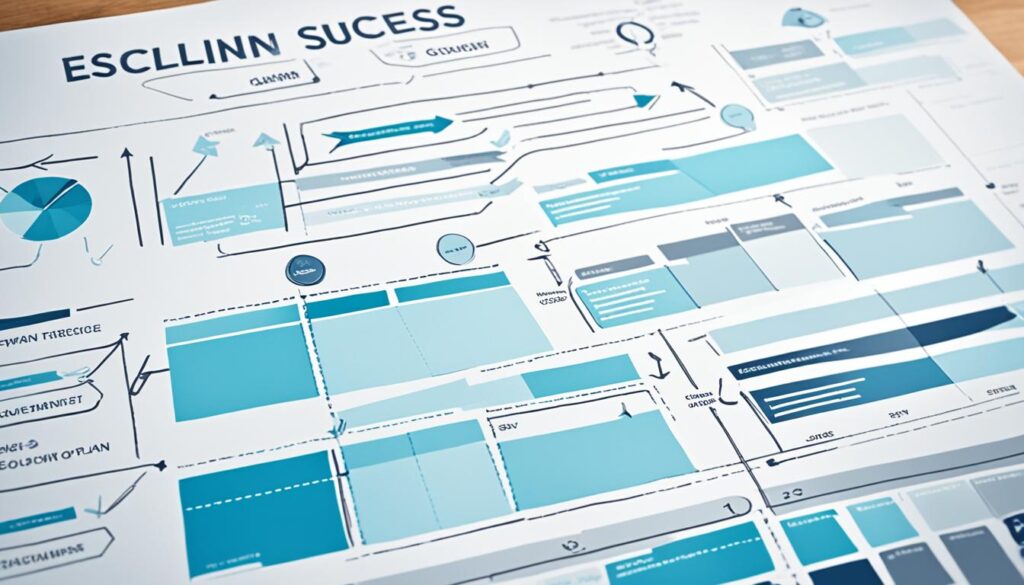In the ever-evolving business landscape, having a customer success team has become essential for organizations. As competition intensifies and market dynamics shift, companies recognize the need to go beyond traditional customer support and service teams. A growth-oriented customer success team actively pursues opportunities to drive growth within the organization by identifying avenues for account expansion, such as upselling, cross-selling, and deepening customer relationships. This shift requires a fundamental change in mindset, strategy, and skill set, transforming the traditional customer success team into a growth-driven powerhouse.
The Need for a Growth-Oriented CS Team
In today’s hyper-competitive market, simply retaining existing customers is no longer enough. To thrive and increase revenue, organizations need a growth-oriented customer success (CS) team that actively seeks out opportunities to expand their customer base and foster long-term loyalty.
A growth-oriented CS team goes beyond just ensuring customer satisfaction; they are proactive growth drivers. Instead of waiting for problems to arise, these account managers actively look for opportunities to upsell and cross-sell, driving increased revenue and cultivating enduring customer relationships. By shifting to this growth-focused mindset, CS teams become essential in achieving sustainable success.
Let’s explore how a growth-oriented CS team can benefit your organization:
- Drive Revenue: By actively seeking upselling and cross-selling opportunities, a growth-oriented CS team can generate additional revenue for your business.
- Foster Long-Term Loyalty: By nurturing customer relationships and exceeding expectations, a growth-oriented CS team helps build long-term loyalty and increases customer lifetime value.
- Thrive in the Market: In a competitive landscape, organizations that prioritize growth-oriented CS teams have a better chance of staying ahead of the competition and thriving in the market.
- Proactive Growth Drivers: A growth-oriented CS team takes a proactive approach to identify and capitalize on growth opportunities, instead of merely reacting to customer issues.
By investing in a growth-oriented CS team, organizations can position themselves for long-term success, drive revenue, and build lasting customer relationships.

Comparing Traditional and Growth-Oriented CS Teams
| Traditional CS Team | Growth-Oriented CS Team |
|---|---|
| Focuses on customer satisfaction and retention | Driven by revenue growth and expansion |
| Reactive problem-solvers | Proactive growth drivers |
| Primarily maintains existing customer base | Actively seeks upselling and cross-selling opportunities |
| Ensures customer satisfaction | Builds enduring customer relationships |
The Roadmap to a Growth-Driven CS Team
Transforming a traditional customer success team into a growth-oriented powerhouse requires a comprehensive and well-structured plan. This roadmap consists of five essential steps that will help your organization transition its CS team into a proactive growth-driven powerhouse:
- Develop a Customer Account Growth Plan
- Train your CS Team for Growth
- Set Clear Goals and Metrics
- Leverage Technology for Scalable Growth
- Foster Customer Advocacy
By following these steps, you can lay a solid foundation for your CS team’s transformation and pave the way for a successful growth-driven approach.
Develop a Customer Account Growth Plan
A well-defined customer account growth plan is crucial for achieving scalable and sustainable growth. It involves identifying growth opportunities within existing accounts and creating actionable strategies to capitalize on them. By understanding your customers’ needs and objectives, you can proactively offer solutions that drive account expansion. Consider factors such as customer lifecycle stages, buying patterns, and potential upselling or cross-selling opportunities. This plan serves as a roadmap for your CS team, aligning their efforts with the organization’s growth objectives.
Train your CS Team for Growth
Training your CS team is essential to equip them with the skills and knowledge they need to drive growth. Develop tailored training programs that focus on strengthening their customer service and sales skills. Provide resources and continuous learning opportunities to keep them updated with the latest industry trends and best practices. Foster a growth mindset within your team, encouraging them to think creatively and proactively identify opportunities for account expansion. By investing in your team’s development, you empower them to be effective growth drivers for your organization.
Set Clear Goals and Metrics
Setting clear goals and metrics is vital to measure your CS team’s performance and track their progress towards growth targets. Define key performance indicators (KPIs) that align with your organization’s growth objectives, such as revenue growth, customer retention rate, or customer satisfaction score. These metrics provide visibility into your team’s impact on business growth and enable you to make data-driven decisions. Regularly review and analyze these metrics to identify areas for improvement and celebrate successes.
Leverage Technology for Scalable Growth
Technology plays a crucial role in enabling scalable growth for your CS team. Implement customer relationship management (CRM) software to centralize customer data, track interactions, and identify growth opportunities. Leverage automation tools to streamline repetitive tasks and free up time for your team to focus on strategic initiatives. Utilize analytics tools to gain insights into customer behavior and preferences, allowing you to tailor your approach and maximize customer lifetime value. Embracing technology empowers your CS team to efficiently manage a growing customer base and deliver personalized experiences.
Foster Customer Advocacy
Customer advocacy is a powerful driver of growth. Cultivate a culture of customer advocacy within your organization, encouraging your CS team to prioritize customer success and satisfaction. Develop strategies that promote positive word-of-mouth, such as referral programs or testimonials. Regularly engage with customers to understand their needs, address concerns, and identify opportunities for improvement. By building strong relationships and fostering customer loyalty, you create brand advocates who not only continue to support your business but also attract new customers through their recommendations.
By following this roadmap, your organization can transform its customer success team into a growth-driven powerhouse. Each step plays a vital role in optimizing your team’s performance and driving scalable growth. With a customer account growth plan, a well-trained CS team, clear goals and metrics, leveraged technology, and a culture of customer advocacy, your CS team will thrive in today’s competitive market.
| Steps to a Growth-Driven CS Team | Description |
|---|---|
| Develop a Customer Account Growth Plan | Identify growth opportunities and create actionable strategies. |
| Train your CS Team for Growth | Equip your team with the necessary skills and a growth mindset. |
| Set Clear Goals and Metrics | Define KPIs to measure performance and track progress. |
| Leverage Technology for Scalable Growth | Utilize CRM, automation, and analytics tools to drive efficiency. |
| Foster Customer Advocacy | Cultivate a culture of customer success and loyalty. |

The Benefits of a Growth-Driven CS Team
The advantages of a growth-oriented customer success team extend beyond increased revenue. By cultivating a growth mindset within your organization, your account managers can serve as trusted advisors and strategic partners to your clients. This fosters more robust and enduring customer relationships, amplifying the overall value proposition of your products and services.
Implementing best practices and strategies for customer success and growth enables your organization to establish itself as a leader in the industry, staying ahead in this constantly evolving business landscape.
Here are some key benefits of a growth-driven CS team:
- Increased Revenue: A growth-driven customer success team actively seeks out opportunities for account expansion, such as upselling and cross-selling. By driving increased revenue, your organization can achieve sustainable growth.
- Enduring Customer Relationships: By serving as trusted advisors, your account managers build strong and enduring relationships with your clients. This results in higher levels of customer satisfaction, loyalty, and retention.
- Amplified Value Proposition: A growth-oriented CS team focuses on understanding and addressing the unique needs and goals of each client. By delivering tailored solutions and personalized experiences, your organization enhances its value proposition and differentiates itself in the market.
- Customer Success and Growth: By aligning your customer success efforts with the growth objectives of your organization, you create a mutually beneficial relationship. Your success becomes intertwined with your customers’ success, fostering a culture of collaboration and shared achievements.
Embracing a growth-driven approach to customer success empowers your organization to unlock its full potential, driving increased revenue, enduring customer relationships, and sustained growth.

Develop a Customer Account Growth Plan
To maximize the potential for customer growth and create a targeted approach, it is crucial for organizations to develop a customer account growth plan. This plan outlines the necessary steps to identify growth opportunities, prioritize high-potential customers, and create actionable plans for expansion. By implementing a well-crafted growth plan, businesses can drive revenue growth and nurture stronger relationships with their customers.
Identify Growth Opportunities
Start by conducting a thorough analysis of your existing customer base to identify potential growth opportunities. Look for patterns and trends within your customer data to pinpoint areas where additional sales, upselling, or cross-selling can be implemented. This data-driven approach ensures that your growth efforts are focused on areas with the highest potential for success.
Priority High-Potential Customers
Not all customers are created equal when it comes to growth potential. Prioritize customers who demonstrate a higher likelihood of expanding their engagement with your company. Consider factors such as revenue potential, strategic alignment, and the customer’s demonstrated interest in your product or service. By prioritizing high-potential customers, you can allocate your resources effectively and maximize your chances of success.
Create Actionable Plans
Once you have identified growth opportunities and prioritized high-potential customers, it’s essential to create actionable plans for each targeted customer. These plans should outline specific objectives, strategies, and tactics to drive growth within each customer account. Assign responsibilities to team members and set clear timelines to ensure accountability and progress monitoring.
Remember to tailor your plans to each customer’s unique needs and goals. Personalization is key when it comes to fostering stronger customer relationships and driving account expansion.
Here’s an example of how a customer account growth plan could look:
| Customer | Growth Opportunity | Action Plan |
|---|---|---|
| ABC Corporation | Upsell additional product features | 1. Conduct a comprehensive needs analysis 2. Present customized upsell proposal 3. Provide product training for new features |
| XYZ Inc. | Expand to new departments | 1. Identify key stakeholders in target departments 2. Schedule meetings to present benefits and ROI 3. Provide case studies and testimonials from similar industries |

By developing a comprehensive customer account growth plan, organizations can strategically focus their efforts, drive expansion within their existing customer base, and ultimately increase revenue while nurturing stronger customer relationships.
Train Your CS Team for Growth
Equipping your customer success team with the right skills and mindset is crucial for driving account expansion and delivering results. By investing in continuous training and providing necessary resources, you enable your team to excel in their roles and establish a solid foundation for sustainable growth.
Take a proactive approach by offering training programs that focus on customer success team skills, growth mindset, sales techniques, and negotiation tactics. These programs empower your team to take a consultative selling approach, building strong relationships and uncovering new opportunities within existing accounts.
Continuous training and development are essential to keep your team up-to-date with industry trends and best practices. Provide relevant resources, such as industry publications, webinars, and workshops, to ensure your team has access to the latest knowledge. This ongoing investment in their growth will empower them to adapt to changing customer needs and drive account expansion.
“Continuous training is not just a one-time event—it is a commitment to the growth and success of your customer success team.”
Remember, the success of your customer success team directly impacts the success of your organization. By equipping them with the right skills, mindset, and resources, you empower them to drive account growth and deliver exceptional results.
Benefits of Training Your CS Team for Growth
- Increased customer retention and satisfaction
- Enhanced upselling and cross-selling opportunities
- Improved customer relationships and trust
- Ability to adapt to changing customer needs
- Creation of a high-performing and motivated team
Investing in the continuous training and development of your customer success team is a strategic decision that fuels sustainable growth and ensures your organization’s long-term success.
Training Program Outline
| Training Area | Description |
|---|---|
| Sales Techniques | Equip your team with effective sales techniques, including consultative selling, objection handling, and relationship building. |
| Negotiation Tactics | Provide your team with the skills to negotiate win-win outcomes, ensuring both customer satisfaction and business growth. |
| Consultative Selling | Train your team to become trusted advisors by understanding customer needs, identifying challenges, and providing tailored solutions. |
By incorporating these training areas into your program, you create a comprehensive skill set within your customer success team, driving growth and delivering exceptional value to your customers.
Implementing a VOC Program
Implementing a Voice of the Customer (VOC) program can be a game-changer for organizations looking to enhance their customer satisfaction and drive growth. By actively listening to the voice of your customers, you can gather valuable feedback and make data-driven decisions to improve your products and services.
One crucial aspect of VOC implementation is establishing an account health score. This score helps customer success teams identify early warning signs of customer churn and take proactive measures to address any issues. By closely monitoring the health of customer accounts, you can ensure that potential risks are identified and resolved before they turn into larger problems.
A key element of a successful VOC program is maintaining an outcome-focused approach. Your customer success team should work closely with customers to help them achieve their desired outcomes. Through outcome mapping exercises, regular touch-base meetings, and enhanced product training, you can ensure that your customers are on the right path to success.
“Our VOC program has been integral in understanding our customers’ needs and aspirations. By focusing on outcomes, we have successfully guided our customers towards achieving their goals.” – Jane Adams, Head of Customer Success at XYZ Company
The implementation of a VOC program also requires leveraging technology and tools to gather and analyze customer feedback effectively. With the help of customer survey tools and sentiment analysis software, you can extract valuable insights from customer feedback and make informed decisions to improve your offerings.
By embracing a VOC program, businesses can better understand customer needs, identify areas for improvement, and develop customer-centric strategies. This approach ultimately leads to enhanced customer satisfaction, loyalty, and sustainable growth.
Benefits of Implementing a VOC Program:
- Gain valuable insights into customer needs and expectations
- Identify areas for improvement and enhance product/service offerings
- Proactively address customer concerns and reduce churn
- Strengthen customer relationships and foster loyalty
- Drive business growth through customer-centric strategies
Implementing a VOC program is a strategic move that puts your customers at the forefront of your business. By actively listening to their feedback and making data-driven decisions, you can create a customer-centric organization that thrives in today’s competitive market.
Conclusion
In today’s competitive market, the role of customer success teams is crucial for driving business growth and sustaining success. By implementing effective strategies such as developing a customer account growth plan, training the team for growth, implementing VOC programs, and embracing a growth-driven mindset, organizations can stay ahead of the competition.
Optimizing your customer success team enables you to align your efforts with customer needs and enhance customer satisfaction. By leveraging the expertise of customer success managers, you can drive long-term success and cultivate enduring relationships with your customers.
Remember, in the ever-evolving business landscape, a proactive approach is essential. By embracing a growth mindset and continuously refining your customer success strategies, you can navigate the challenges of the competitive market and position your business for sustainable growth.
FAQ
What is the purpose of a growth-oriented customer success team?
A growth-oriented customer success team actively seeks out opportunities to drive growth within the organization by identifying avenues for account expansion, such as upselling, cross-selling, and deepening customer relationships.
How does a growth-oriented customer success team differ from a traditional customer success team?
While a traditional customer success team focuses on retaining existing customers, a growth-oriented customer success team goes beyond customer satisfaction and actively seeks out opportunities to upsell and cross-sell, driving increased revenue and long-term loyalty.
What steps are involved in transforming a traditional customer success team into a growth-oriented powerhouse?
The five essential steps include developing a customer account growth plan, training the CS team for growth, setting clear goals and metrics, leveraging technology for scalable growth, and fostering customer advocacy.
What are the advantages of having a growth-oriented customer success team?
A growth-oriented customer success team cultivates enduring customer relationships, serves as trusted advisors and strategic partners to clients, and amplifies the overall value proposition of products and services.
How can organizations develop a customer account growth plan?
Organizations can develop a customer account growth plan by identifying growth opportunities within existing accounts, prioritizing high-potential customers based on revenue potential and strategic alignment, and creating actionable plans for each targeted customer.
How can organizations train their customer success teams for growth?
Organizations can train their customer success teams for growth by providing sales techniques training, negotiation tactics, and consultative selling. Continuous training and resources should also be provided to ensure the team remains up-to-date with industry trends and best practices.
What is the significance of implementing a Voice of the Customer (VOC) program?
Implementing a VOC program allows organizations to gather valuable feedback and make data-driven decisions for improving their products and services. It helps businesses better understand customer needs, drive growth, and enhance customer satisfaction.
How do customer success teams contribute to business growth in a competitive market?
Customer success teams play a vital role in driving business growth by optimizing the customer success team through strategies such as developing a customer account growth plan, training the team for growth, implementing VOC programs, and embracing a growth-driven mindset.
